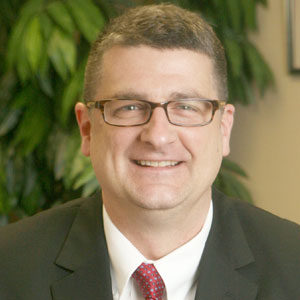Secure Technology Sharpens Competitive Edge
By John Owens
 We are inundated with technology on a daily basis. We should take a moment to think about how technology has changed the way we deliver services in the construction industry. It is an important activity for any industry to be retrospective while having a forward view of how changes and advancements in technology will impact how we deliver to our customers. Similar to other industries, construction has evolved due to technology even within the last 20 years. Within the construction industry, items such as mobile devices, electronic project plans, and even Microsoft Excel were not commonly utilized tools at the turn of the century. It is important to remember that common technology such as Apple’s iPhone was not commercially available until 2007. Understanding when to adopt and how to secure new technologies allows organizations to stay competitive and deliver to their customers.
We are inundated with technology on a daily basis. We should take a moment to think about how technology has changed the way we deliver services in the construction industry. It is an important activity for any industry to be retrospective while having a forward view of how changes and advancements in technology will impact how we deliver to our customers. Similar to other industries, construction has evolved due to technology even within the last 20 years. Within the construction industry, items such as mobile devices, electronic project plans, and even Microsoft Excel were not commonly utilized tools at the turn of the century. It is important to remember that common technology such as Apple’s iPhone was not commercially available until 2007. Understanding when to adopt and how to secure new technologies allows organizations to stay competitive and deliver to their customers.
In the Cloud
I can almost guarantee that you utilize at least one “cloud” application, if not many, during your workday. Some examples of these include Microsoft 365, DropBox, and Google Workspace. Others that you may not be aware of using include iCloud and Google Drive, which provide backup services for your smart phone. With all the cloud-based software as a service (SaaS), we hardly think about the fact that we are utilizing cloud services. Not only are we utilizing more and more SaaS based solutions, competitive edge and speed to market require that you understand how to integrate and secure these services. In the construction industry, projected use of technology items such as safety wearables, augmented and virtual reality, and real-time reporting will further stretch the need for cloud-connected environments.
Cyber Security / Zero Trust Strategies
With all technology, new and legacy, there is an inherent cyber security risk of business interruption. If you feel like there has been an increase in cyber activity over the last several years, you are correct. In August of 2021, Accenture Security, an arm of the global professional services company, reported a “triple digit increase in cyber-attacks” in the first half of 20211. With the proliferation of computing devices and technology that improves our ability to deliver to customers and consumers, security cannot be an afterthought, but must be a primary focus of your technology strategy. It is important that companies large and small begin to adopt security strategies that allow workers to securely perform work tasks regardless of their location. The past perimeter-based network architecture that focused on securing office or data locations is no longer sufficient in today’s technology landscape and will not scale with tomorrow’s advancements in technology. Your organization should be investigating how Zero Trust strategies can help you innovate and secure technology regardless of the location of your users or your business environment.
You may have heard IT or Information Security staff within your organization discussing Zero Trust. It is important to note that Zero Trust Architecture2 (ZTA) is not a product, but an approach. ZTA is a cyber security defense strategy that realigns your technology focus from a location-based perimeter strategy to one that focuses on securing your business environment through a combination of modern security approaches. At the crux of ZTA is the concept that there is no inherent trust. No device, user, or location is treated as secure and allowed to access resources within your business, wherever those resources reside or wherever they are accessed from. ZTA allows you to approach security in a uniform process across all platforms whether they reside within your facility or in the cloud.
It is obvious that IT strategy is no longer a practice reserved solely for large enterprise organizations. Also, there is no question that technology in all industries, including construction, will advance over the next five to ten years. It is important that your organization not only investigate how to utilize technology to provide value to your customers and improve delivery, but also how to integrate and secure your technology investments.
1 https://www.accenture.com/us-en/blogs/security/triple-digit-increase-cyberattacks
2 https://csrc.nist.gov/publications/detail/sp/800-207/final
John brings over 30 years of experience to his role as Vice President, Information Technology (IT) at Welliver. He is a technology expert with demonstrated expertise and leadership in IT infrastructure, security, and IT service management. A forward-thinking subject matter expert and skilled analytical strategist, John applies a deeper understanding and extensive knowledge base into the design of the company’s IT infrastructure. John can be reached at [email protected]






 Kids can learn anywhere. COVID proved it!
Kids can learn anywhere. COVID proved it!